Choosing the right outboard motor is not just about powering your boat, but transforming your boating experience. The engine you select directly impacts the performance, efficiency, and enjoyment of your time on the water. That's why focusing on a leader in outboard technology, such as Mercury, becomes crucial. Known for their innovation and reliability, Mercury outboards offer a range of options to suit various boating styles and needs.
Whether navigating the serene waters of a lake, fishing in coastal areas, or engaging in high-speed water sports, there's a Mercury outboard designed to meet the demands of your activities and enhance your boating lifestyle. This guide will help you understand the key factors to consider when selecting a Mercury outboard, ensuring that you make an informed decision that maximizes your boat's potential and enjoyment of the water.
The Mercury Outboards Engine Section Guide contains the following:
- Determining the needs of your boat and application
- Selecting an appropriate engine size
- Navigating your budget
- Single or multiple engines
- Understanding Mercury outboard model codes
Decoding Your Boat’s Needs
What Outboard Motor Does Your Boat Need?
Selecting the right outboard engine involves understanding the specific needs of your boat. Here’s what to consider:
Boat Size and Type:- The size of your boat largely dictates the engine choice. Smaller boats may require less horsepower, while larger vessels need more power to operate efficiently.
- Different types of boats, such as pontoons, fishing boats, or leisure craft, have unique requirements based on their design and intended use.
How Will You Use Your Boat?
Choosing the right engine also depends on how you plan to use your boat:
Intended Activities:- Engine needs can vary significantly based on whether you're fishing, cruising, or engaging in water sports. Each activity might benefit from specific engine characteristics like power, ease of control, or fuel efficiency.
- The body of water where you boat affects your choice, too. Due to differences in water conditions and salinity, engines suitable for lakes differ from those ideal for coastal waters.
Understanding your boat's specifications and how you intend to use it will guide you to the best Mercury outboard for your needs, ensuring optimal performance and satisfaction.
Selecting the Ideal Engine Size
How Much Horsepower Do You Need?
Choosing the correct horsepower for your boat is crucial for efficiency and performance. Here’s how to make this critical decision:
Calculating Horsepower Needs:- Your boat’s size and intended use determine the required horsepower. More horsepower can mean more speed and power, but it must be balanced with fuel efficiency.
- Generally, smaller boats (up to 16 feet) might operate well with engines from 15 to 100 HP, while medium-sized boats (17 to 25 feet) often need 75 to 300 HP. Larger boats may require even more power, typically anywhere from 250 HP upwards.
Balancing Weight and Performance
Selecting an engine isn’t just about power; it's also about maintaining the right balance of weight and performance:
Engine Weight Considerations:- The weight of the engine affects your boat’s stability and handling. An overly heavy engine can weigh down the stern, altering performance and safety.
Importance of Transom Height
- The transom height is critical because it determines the size of the outboard that can be mounted. An appropriate match between transom height and engine size ensures optimal performance and prevents water ingress.
Understanding these factors will help you choose an engine that not only meets your power needs but also complements the physical dynamics of your boat, ensuring safe and enjoyable boating experiences.
Navigating Your Budget
Investing Wisely: New or Used Engines?
Deciding between a new or used engine can significantly affect your budget when purchasing a Mercury outboard. Here's a breakdown of the considerations:
Benefits and Drawbacks:- New Engines: Offer the latest technology, full warranties, and the assurance of no wear and tear. However, they have a higher initial cost.
- Used Engines: Can be much more affordable and offer good value if in excellent condition. The main risks include potential hidden problems and usually a shorter or no warranty period.
What Will Your Engine Cost?
The upfront cost of your Mercury outboard is just part of the financial picture. Understanding the total cost of ownership is essential for making a budget-smart decision:
Long-Term Costs of Ownership:- Factor in ongoing expenses such as fuel consumption, regular maintenance, and potential repairs. More efficient or newer engines might save money on fuel and maintenance in the long run.
- A solid warranty can mitigate unexpected repair costs, enhancing the cost-effectiveness of a new engine. When considering used engines, weigh the potential costs of repairs that would otherwise be covered under a warranty.
Choosing Between Single or Multiple Engines
Single vs. Multiple Engines: Deciding What’s Best for Your Boat
When configuring your boat with a Mercury outboard, one of your decisions is whether to go with a single engine or multiple engines. Here's what to consider when making this choice:
Benefits of Single Engines:- Cost-Effectiveness: Generally, a single engine costs less to purchase and maintain than multiple engines. It’s a practical choice for smaller boats and those used in calmer waters where high power isn’t necessary.
- Maintenance Simplicity: With only one engine to service, the complexity and time involved in maintenance are reduced, which can be a significant advantage for casual or less frequent boaters.
- Increased Power and Speed: Multiple engines can provide the additional thrust needed for larger boats or boating in rougher water conditions, enhancing performance and safety.
- Redundancy: Having multiple engines can be a lifesaver in emergencies. If one engine fails, the other can still operate, allowing you to return to shore safely.
- Improved Maneuverability: Boats with multiple engines often experience better handling and easier docking, thanks to the increased control over the boat’s movements.
Understanding Mercury Outboard Model Codes
Mercury outboard model codes are a concise way to identify the features of each engine, making it easier for customers to find a motor that meets their boating needs. Each segment of a model code provides insight into the engine's characteristics, including starting mechanism, shaft length, steering type, and additional functionalities such as power trim or oil injection.
Elements of Model Codes
- Starting Type: Indicated by an initial letter, "E" for Electric start and "M" for Manual start.
- Shaft Length: Described with additional letters, such as "L" for Long shaft, "XL" for Extra long shaft, and "XXL" for Extra extra long shaft.
- Steering Type: Specified with "H" for Tiller handle steering and "R" for Remote control steering. Sometimes, these are combined with other features.
- Additional Features: Includes options like "P" for Power trim and "O" for Oil injection. These features enhance the engine’s usability and maintenance.
Model Code Examples
The following codes illustrate how the elements combine to describe the engine's detailed specifications:
- CXL - Extra long shaft (25”/635mm), Left-hand prop rotation (V-6 models)
- CXXL - Extra extra long shaft (30”/762mm), Left-hand prop rotation (V-6 models)
- E - Electric start, short shaft (15”/381mm), Remote control steering
- EH - Electric start, short shaft (15”/381mm), Tiller handle steering
- EHO - Electric start, short shaft (15”/381mm), Tiller handle steering, Oil injection
- EL - Electric start, long shaft (20”/508mm), Remote control steering
- ELH - Electric start, long shaft (20”/508mm), Tiller handle steering
- ELHO - Electric start, long shaft (20”/508mm), Tiller handle steering, Oil injection
- ELHPT - Electric start, long shaft (20”/508mm), Tiller handle steering, Power trim
- ELHPTO - Electric start, long shaft (20”/508mm), Tiller handle steering, Power trim, and oil injection
- ELLH - Electric start, long-long shaft (22-1/2”/572mm), Tiller handle steering
- ELO - Electric start, long shaft (20”/508mm), Remote control steering, Oil injection
- ELPT - Electric start, long shaft (20”/508mm), Remote control steering, Power trim
- ELPTO - Electric start, long shaft (20”/508mm), Remote control steering, Power trim and oil injection
- EMH - Electric start, short shaft (15”/381mm), Tiller handle steering
- EMLH - Electric and manual start, long shaft (20”/508mm), Tiller handle steering
- EO - Electric start, short shaft (15”/381mm), Remote control steering, Oil injection
- EPT - Electric start, short shaft (15”/381mm), Remote control steering, Power trim
- EXLH - Electric start, extra long shaft (25”/635mm), Tiller handle steering
- EXLHPT - Electric start, extra long shaft (25”/635mm), Tiller handle steering, Power trim
- EXLHPTO - Electric start, extra long shaft (25”/635mm), Tiller handle steering, Power trim and oil injection
- EXLPT - Electric start, extra long shaft (25”/635mm), Remote control steering, Power trim
- L - Long shaft (20”/508mm), Right-hand prop rotation (V-6 models)
- M - Manual start, short shaft (15”/381mm), Tiller handle steering
- ML - Manual start, long shaft (20”/508mm), Tiller handle steering
- MLL - Manual start, long-long shaft (22-1/2”/572mm), Tiller handle steering
- MLRC - Manual start, long shaft (20”/508mm), Remote control steering
- MRC - Manual start, short shaft (15”/381mm), Remote control steering
- MSL - Manual start, short-long shaft (17-1/2”/445 mm), Tiller handle steering
- MXL - Manual start, extra long shaft (25”/635mm), Remote control steering
- XL - Extra long shaft (25”/635mm), Right-hand prop rotation (V-6 models)
- XXL - Extra extra long shaft (30”/762mm), Right-hand prop rotation (V-6 models)
Conclusion: Making the Right Choice When Purchasing a Mercury Outboard
Selecting the right Mercury outboard engine is more than just a purchase—it's a commitment to enhancing your boating experience. By carefully considering the size and type of your boat, the specifics of how you will use it, your budget constraints, and the importance of a supportive dealer network, you can make an informed decision that will serve you well for many years.
Remember that the ideal engine will balance power with efficiency and cost with capability. Engage with trusted experts and take the time to explore all your options before making this crucial investment. Doing so will ensure you enjoy every moment on the water with confidence and satisfaction. Contact PartsVu’s customer service–we are happy to help.



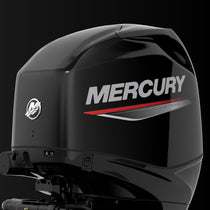
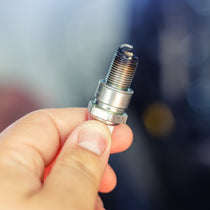
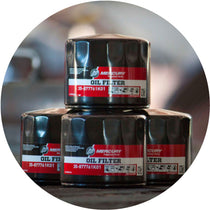
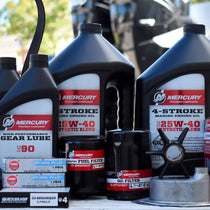
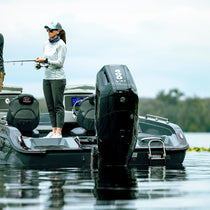













1 comment
If the shaft is to long on a small boat will it cause it not to plane off.
I have two Mercury Mouse boats with new 15 hp long shaft. 25 inch. Will not plane off.
I have tried a three blade and a four blade with the lowest pitch. recommendations?
———
PartsVu replied:
Hi Wade,
Yes, having a long shaft on a small boat can cause issues with planing. Here’s why:
1. Excessive Drag: If the motor’s lower unit (the section below the cavitation plate) is too deep in the water, it creates extra drag, which can prevent the boat from reaching the necessary speed to plane. The ideal height is for the cavitation plate to be even with or slightly above the bottom of the boat’s transom when the boat is at plane. 2. Propeller Position: A long shaft can place the propeller too deep in the water, causing inefficient propulsion. The propeller may encounter more resistance, and the engine may not reach optimal RPMs, limiting the boat’s speed and planing ability. 3. Cavitation and Ventilation: The deep position of the propeller can cause cavitation (formation of vapor bubbles on the propeller surface) and ventilation (air being drawn into the propeller), both of which reduce thrust and efficiency. Recommendations: 1. Adjust Motor Height: If possible, try raising the motor so that the cavitation plate is in the correct position relative to the boat’s transom. This can help reduce drag and improve planing. 2. Check Boat Weight Distribution: Ensure that the weight is properly distributed in the boat. Too much weight at the stern can make planing difficult. 3. Use Trim Tabs or Hydrofoils: Adding trim tabs or hydrofoils can help lift the stern and get the boat on plane more easily. 4. Consult with a Professional: Given the specific setup and potential for adjustments, it may be beneficial to consult with a marine mechanic or a boating professional who can provide hands-on advice and assistance. If the long shaft motors are significantly mismatched for the boat’s design, you might need to consider switching to short shaft motors (typically around 15 inches) if feasible.Jessica Zapatero PartsVu Customer service Manager 888-625-5460 PartsVu.com Monday – Friday 8:00 am to 5:00 pm
[cid:image001.png@01DADEAF.BF392F90]